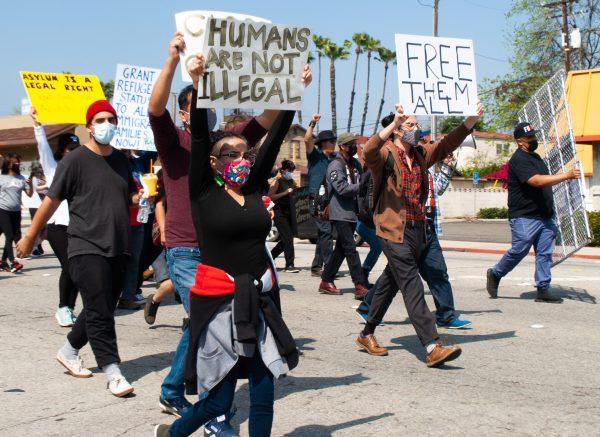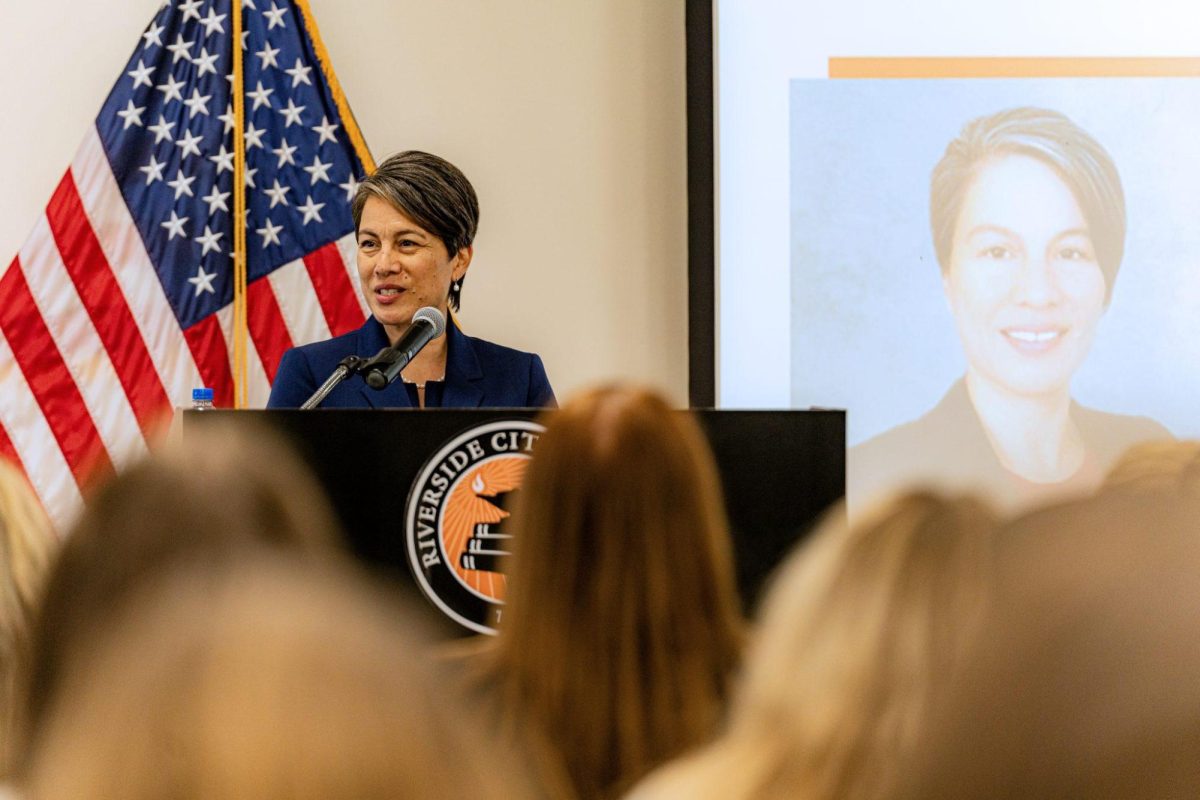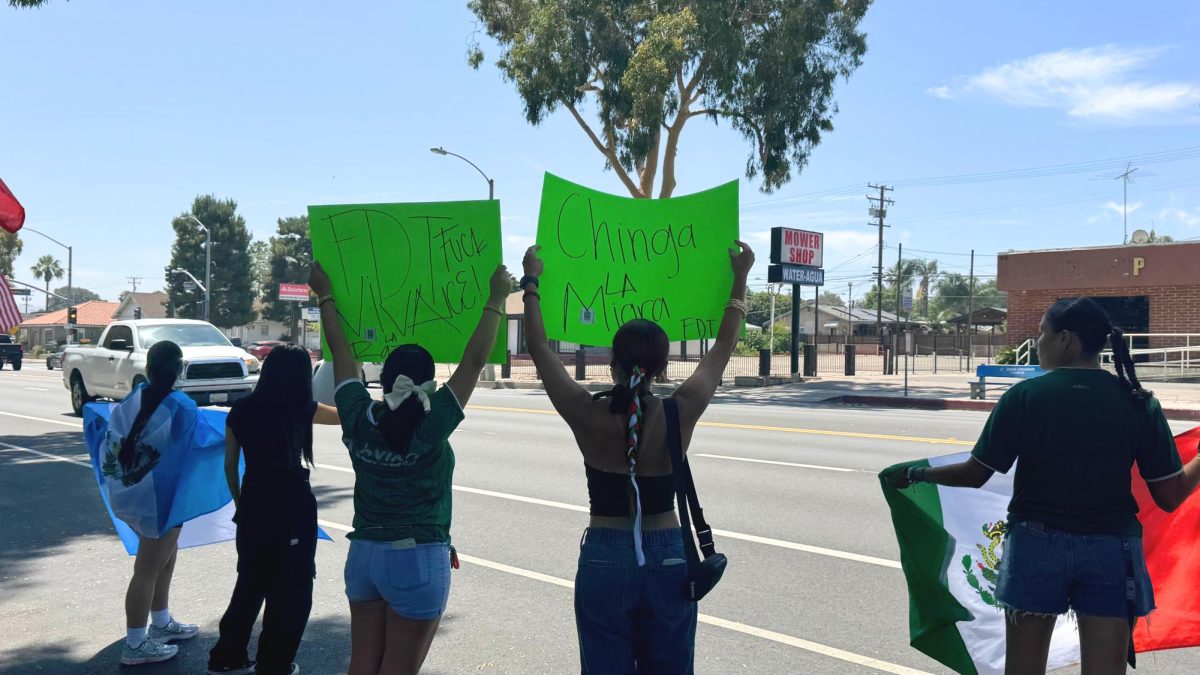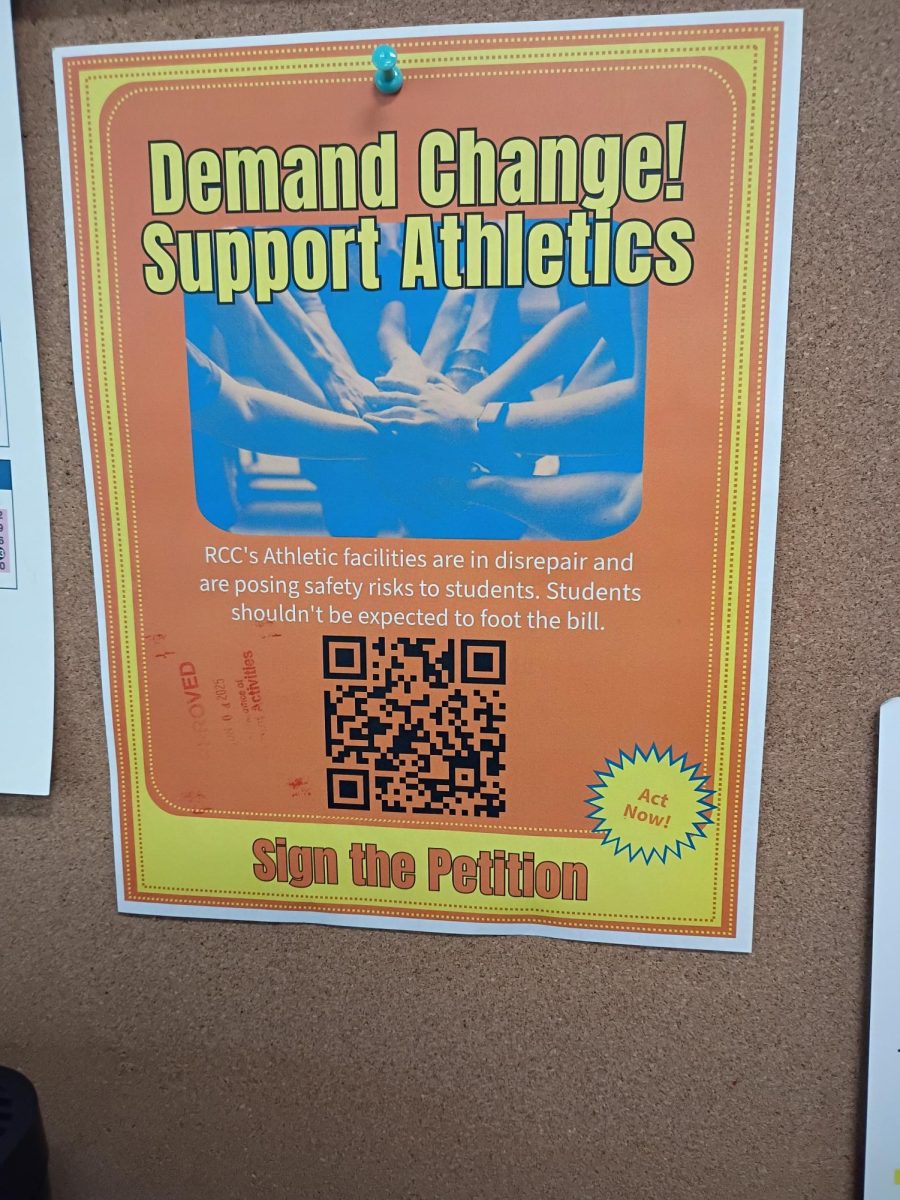
By Arsal Asif
The streets of Pomona shook with the rattling of cages meant to symbolize the structures holding migrant children at the border.
An initial crowd of about 80 grew to over 100 as Pomona residents exited their homes to join the march down Main Street on April 24.
“No more kids in cages,” they chanted. “Abolish ICE.”
Parents and their kin came together at Ganesha Park for a ceremony honoring “Toibingna,” the ancestral burial grounds of the Kizh Nation’s village, which has long since been built over. The park itself was built over the Toibingna burial grounds.
Demonstrators then marched through the city as children chanted alongside their parents.
“Freedom,” the children chanted. “Let us free.”
Elderly and disabled protesters followed the march in a caravan. The marchers trekked two miles, stopping between the Pomona Public Library and City Hall, where they erected the prop fences with the phrase “Concentration Camp” adorning the 4 panels.
Protesters sought to bring awareness to plans to make the Pomona Fairplex an emergency intake site for unaccompanied migrant children.
Hilda Solis, Los Angeles County Board of Supervisors chairs, announced April 9 that the fairgrounds will be taking in 2,500 migrant children from the southern border detention facilities.
Alejandro Garcia, a pre-doctoral student who teaches psychology, criticized Solis’ approach, doubting that holding the children there will be beneficial to the minors.
“Whether it is in a ICE detention center, whether it is at the border detention centers, whether it is here, they are all extensions of the same branch under the same system,” he said.
Garcia argued the county is not being transparent in its plans for the fairgrounds.
“(The supervisors) have been saying that this is a border crisis,” he said. “That what they’re doing is very different from ICE and these children are going to be treated with dignity. However, they’re not really giving us real information. It’s just blanket statements.”
Dee Dee Manzanares Ybarra, a member of the American Indian Movement, proposed that unaccompanied migrant children be placed with families they already have on this side of the border rather than being detained for extended periods of time in migrant detention facilities.
Jojo Reyes Jr., an activist who was detained in a migrant holding facility as a child, explained how indigenous nations were stripped of their land.
“Most of their documentation was written in a Navajo language,” he said, making it null to the American government at the time.
Reyes Jr. questioned the notion that migrant children have been kept in conditions that adhere to COVID-19 safety. While the general public has the opportunity to wear masks and other personal protective equipment, these children are left to fend for themselves in ICE facilities, he added.
“There’s kids dying in the middle of a pandemic,” Reyes Jr. said. “Do you think the kids are wearing gloves? Do you think they’re wearing any masks?”
Reyes Jr. brought attention to the inhumane treatment of migrant children who may have autism, ADHD or other mental disabilities.
He said that these children are scared, just like he was when he was detained as a 3-year-old.
“Imagine a special needs child with no mask, his diaper full, no food, no water, no drink,” Reyes Jr. said. “But he can’t speak for himself. He’s unable to because it’s a certain mental limitation.”
Garcia also raised concerns for the mental well-being of these children. He called for mental health services to be provided to these children during their detainment and after their release.
“That trauma is life-lasting,” he said. “It does not go away the moment they receive asylum. It does not go away the moment they are reunited with their families.”
Ybarra also noted the trauma migrant children are facing while being denied the human touch necessary during developmental years.
“Have you seen one picture of a caretaker hugging a child,” she asked. “I haven’t.”
Sofia Gillespie, an immigration attorney, provided historical context about the Pomona Fairplex’s past uses: the detention of people based on their racial backgrounds.
“During World War II, the United States used this property to inter Japanese Americans,” she said. “I believe we held about 5,400 people here in 1942. I just want to take a moment of silence to show respect to the people who have already suffered on this land.”
Ybarra added to the historical context, arguing that migrant children are not foreign.
“These children are our indigenous children,” she said. “We didn’t cross the borders, they crossed us.”






